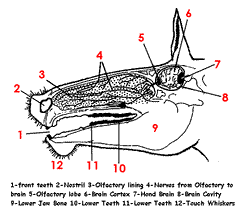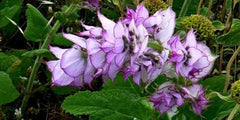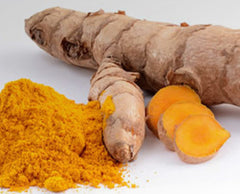As anyone would, I am constantly on the look out for high-quality therapeutic grade oils at a reasonable price. This proves to be a challenge with many oils and sometimes ya just gotta bite the bullet, open the pursestrings and cough up the money. Lavender used to be one of those oils that I would shell out big bucks for, thinking I was getting a better quality oil from "source A" than "source B."
 There are nearly 40 species of Lavender (genus Lavandula), a member of the plant family Lamiaceae. Until recently, I had poo-pooed an oil called "Lavender 40/42" thinking it was a blend of lesser quality oils, and opted for "True Lavender," more correctly, the species called Lavendula Angustfolia or "English Lavender." I had joined the ranks of the Essential Oil Purists! However, in doing further research I have uncovered the truth about lavender oils.
There are nearly 40 species of Lavender (genus Lavandula), a member of the plant family Lamiaceae. Until recently, I had poo-pooed an oil called "Lavender 40/42" thinking it was a blend of lesser quality oils, and opted for "True Lavender," more correctly, the species called Lavendula Angustfolia or "English Lavender." I had joined the ranks of the Essential Oil Purists! However, in doing further research I have uncovered the truth about lavender oils.

The two primary aromatic compounds in lavender oil are "linalool" and "linalyl acetate." Because nature is ever-changing, fluctuations in weather conditions, soil conditions as well as cross pollination can occur. Therefore identical species of lavender plants grown in the same region can produce varying amounts of these two components from crop to crop. In an effort to achieve a consistent balance of the two aromatic components, producers of lavender oil will blend oils from two or more species, and/or grown in different regions. The purpose of the blend is to arrive at the most beneficial levels of Linalool and Linalyl acetate which is 40% and 42% respectively. That way, they and their customers will know the resulting oil will have a consistent fragrance and aromotherapeutic benefits with each batch.
I no longer look at Lavender 40/42 as an "adulterated" or low-quality essential oil. If you buy oils from a trusted source, you can rest assured that Lavender 40/42 will offer the same consistent benefits with every bottle.
Looking for lavender oil? Click here for La Bella Cavalla's Organic Lavender oil!
SOURCES
Essential Oil Wholesale Research Library
Everything Lavender
 There are nearly 40 species of Lavender (genus Lavandula), a member of the plant family Lamiaceae. Until recently, I had poo-pooed an oil called "Lavender 40/42" thinking it was a blend of lesser quality oils, and opted for "True Lavender," more correctly, the species called Lavendula Angustfolia or "English Lavender." I had joined the ranks of the Essential Oil Purists! However, in doing further research I have uncovered the truth about lavender oils.
There are nearly 40 species of Lavender (genus Lavandula), a member of the plant family Lamiaceae. Until recently, I had poo-pooed an oil called "Lavender 40/42" thinking it was a blend of lesser quality oils, and opted for "True Lavender," more correctly, the species called Lavendula Angustfolia or "English Lavender." I had joined the ranks of the Essential Oil Purists! However, in doing further research I have uncovered the truth about lavender oils.
The two primary aromatic compounds in lavender oil are "linalool" and "linalyl acetate." Because nature is ever-changing, fluctuations in weather conditions, soil conditions as well as cross pollination can occur. Therefore identical species of lavender plants grown in the same region can produce varying amounts of these two components from crop to crop. In an effort to achieve a consistent balance of the two aromatic components, producers of lavender oil will blend oils from two or more species, and/or grown in different regions. The purpose of the blend is to arrive at the most beneficial levels of Linalool and Linalyl acetate which is 40% and 42% respectively. That way, they and their customers will know the resulting oil will have a consistent fragrance and aromotherapeutic benefits with each batch.
I no longer look at Lavender 40/42 as an "adulterated" or low-quality essential oil. If you buy oils from a trusted source, you can rest assured that Lavender 40/42 will offer the same consistent benefits with every bottle.
Looking for lavender oil? Click here for La Bella Cavalla's Organic Lavender oil!
SOURCES
Essential Oil Wholesale Research Library
Everything Lavender





 Aromatherapy can therefore be used to alter your horse's state of mind, making them more receptive to handling and more focused for training.
Aromatherapy can therefore be used to alter your horse's state of mind, making them more receptive to handling and more focused for training. If he doesn’t like that particular oil, he will show no interest or even back away or turn his head. Keep in mind that he may not want it today, but he might want it another day for another reason. Horses are very good in knowing what they need. Allow your horse to sniff all he wants, but discourage licking the oil. This process can take a few seconds, to a few minutes or longer. Let your horse be the guide. If he turns away, don't press the issue. Sometimes they will surprise you by reacting negatively at first, then moments later, come back for a second sniff.
If he doesn’t like that particular oil, he will show no interest or even back away or turn his head. Keep in mind that he may not want it today, but he might want it another day for another reason. Horses are very good in knowing what they need. Allow your horse to sniff all he wants, but discourage licking the oil. This process can take a few seconds, to a few minutes or longer. Let your horse be the guide. If he turns away, don't press the issue. Sometimes they will surprise you by reacting negatively at first, then moments later, come back for a second sniff. Some commonly used oils include: lavender for calming, reducing anxiety; Bergamot for reducing nervousness; Basil for focus; Clary Sage for depression and stress. You can even mix your oils and spray them on blankets or stall walls to create a soothing environment. But make sure it’s an oil your horse enjoys.
Some commonly used oils include: lavender for calming, reducing anxiety; Bergamot for reducing nervousness; Basil for focus; Clary Sage for depression and stress. You can even mix your oils and spray them on blankets or stall walls to create a soothing environment. But make sure it’s an oil your horse enjoys.

 The leaves are also used in cooking. Turmeric has been used for centuries first as a spice and then for its medicinal qualities. It has also been used as a dye. Although typically used in its dried, powdered form, turmeric also is used freshly grated, like it's cousin, ginger.
The leaves are also used in cooking. Turmeric has been used for centuries first as a spice and then for its medicinal qualities. It has also been used as a dye. Although typically used in its dried, powdered form, turmeric also is used freshly grated, like it's cousin, ginger.



















